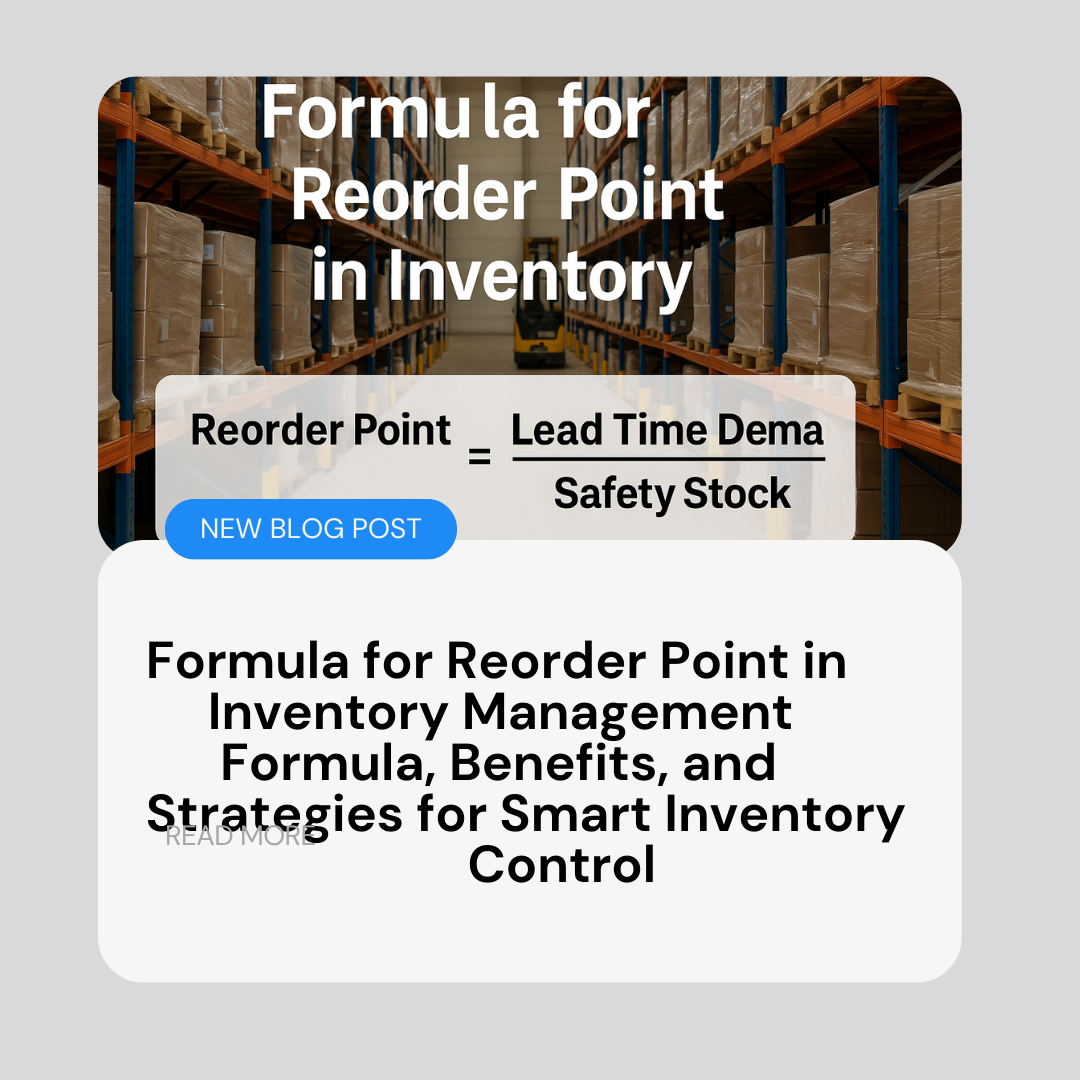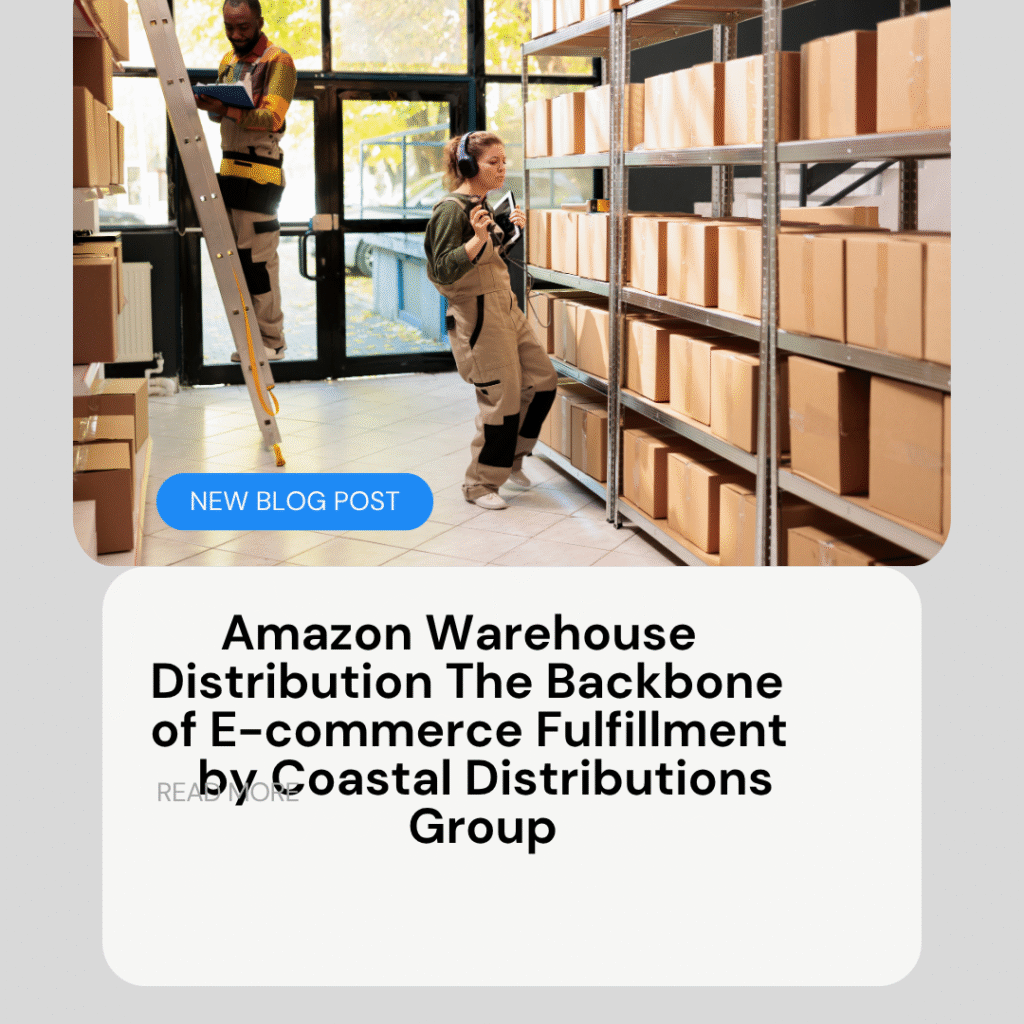Formula for Reorder Point in Inventory Management Formula, Benefits, and Strategies for Smart Inventory Control
Formula for Reorder Point in Inventory Management Formula, Benefits, and Strategies for Smart Inventory Control

Table of Contents
Inventory management for the products lies at the heart of successful supply chain operations. Whether you’re managing a warehouse, running an e-commerce store, or overseeing a distribution network, the ability to maintain optimal stock levels can make or break your business. One of the most important tools in this regard, in inventory management is the Reorder Point (ROP) formula.
The reorder point determines the exact stock level at which a new purchase order must be placed to replenish inventory before it runs out. Without this crucial calculation, businesses face two major risks: stockouts, which disrupt sales and customer satisfaction, or overstocking, which ties up capital and increases storage costs.
At Coastal Distributions Group, we understand the complexities of modern supply chain systems. This article explores the formula for reorder point in detail, explains its components, highlights real-world applications, and provides best practices to ensure businesses maintain the perfect balance between supply and demand.
What is the Reorder Point (ROP)?
The Reorder Point (ROP) is the inventory level for products in warehouse at which a company should trigger a replenishment order to avoid running products out of stock.
Think of it as the minimum safety threshold that ensures business continuity. For example, if your reorder point for a particular product is 500 units, you should place an order for replenishment as soon as your stock hits that number.
Reorder point is not just a guess about remaining products—it is based on demand, lead time, and safety stock calculations.
Why is the Reorder Point Important?
a) Prevents Stockouts
Running out of stock leads to lost sales, unhappy customers, and potential damage to your brand reputation.
- b) Improves Cash Flow
Reorder points help businesses avoid tying up excess cash in overstock.
- c) Enhances Efficiency
By automating the reorder process based on ROP, companies save time and reduce manual errors.
- d) Balances Supply & Demand
The right reorder point ensures that supply meets customer demand without delays.
- The Formula for Reorder Point
The standard Reorder Point Formula is:
Reorder Point (ROP)=(Average Daily Demand×Lead Time in Days)+Safety Stock\text{Reorder Point (ROP)} = (\text{Average Daily Demand} \times \text{Lead Time in Days}) + \text{Safety Stock}
Explanation of Terms:
- Average Daily Demand (ADD): The average number of units or products sold or used per day.
- Lead Time (LT): The number of days between placing an order and receiving the stock.
- Safety Stock (SS): Extra stock kept as a buffer against unexpected demand spikes or supply chain delays.
Breaking Down the Components
4.1 Average Daily Demand
This can be calculated as:
ADD=Total Units Sold in PeriodNumber of Days in Period\text{ADD} = \frac{\text{Total Units Sold in Period}}{\text{Number of Days in Period}}
Example: If you sell 3,000 units in 30 days, your ADD is 100 units per day.
4.2 Lead Time
Lead time varies based on supplier reliability, distance, and production capacity. For global supply chains, lead times can stretch into weeks.
4.3 Safety Stock
Safety stock is a strategic buffer. It can be calculated using:
Safety Stock=(Maximum Daily Usage×Maximum Lead Time)−(Average Daily Usage×Average Lead Time)\text{Safety Stock} = (\text{Maximum Daily Usage} \times \text{Maximum Lead Time}) – (\text{Average Daily Usage} \times \text{Average Lead Time})
This ensures protection against uncertainty.
Example of Reorder Point Calculation
Suppose:
- Average Daily Demand = 100 units
- Lead Time = 7 days
- Safety Stock = 200 units
ROP=(100×7)+200ROP = (100 \times 7) + 200 ROP=900unitsROP = 900 units
This means you should reorder when your stock falls to 900 units.
Factors Affecting Reorder Point
- Seasonality – Increased demand during festive or peak seasons requires higher safety stock.
- Supplier Reliability – Unreliable suppliers with longer or inconsistent lead times increase ROP.
- Product Type – Perishable goods require tighter ROP controls compared to durable goods.
- Order Costs – Businesses balancing order frequency with holding costs adjust ROP accordingly.
Benefits of Using Reorder Point Formula
- Optimal Stock Levels – Neither too high nor too low.
- Reduced Lead Time Risks – Orders are placed before depletion.
- Improved Profitability – Less capital tied up in unnecessary stock.
- Better Customer Service – Products remain available when customers need them.
Common Mistakes Businesses Make
- Ignoring fluctuations in demand.
- Setting the same ROP for all products instead of category-based calculations.
- Not updating safety stock after market changes.
- Over-relying on manual systems instead of automated tools.
Technology and ROP – The Coastal Distributions Group Advantage
At Coastal Distributions Group, we integrate AI-powered inventory systems that dynamically calculate reorder points. These systems use real-time data on demand patterns, supplier lead times, and sales forecasts.
Key features include:
- Automated reorder triggers.
- Integration with supplier databases.
- Real-time safety stock adjustments.
- Analytics dashboards for forecasting demand.
Industry Applications
- a) Retail
Fast-moving consumer goods (FMCG) require precise reorder points to keep shelves stocked.
- b) Manufacturing
Production lines depend on raw materials arriving at the right time.
- c) E-commerce
With thousands of SKUs, automated ROP ensures no product goes out of stock.
- d) Pharmaceuticals
Strict demand and regulatory standards require accurate reorder management.
- Advanced Reorder Point Models
- a) Demand Forecasting Models
Using predictive analytics to adjust ROP based on future demand trends.
- b) Just-in-Time (JIT) Approach
Minimizes inventory holding costs by syncing orders with real-time demand.
- c) Multi-Echelon Inventory Optimization
For businesses managing multiple warehouses, ROP is set at both local and central levels.
Case Study: Improving Inventory Efficiency with ROP
A mid-sized distributor struggled with frequent stockouts and high holding costs. By implementing ROP formulas and leveraging Coastal Distributions Group’s AI-driven systems, they achieved:
- 25% reduction in stockouts
- 15% lower holding costs
- 20% faster order fulfillment
Best Practices for Setting Reorder Points
- Recalculate ROP quarterly.
- Use different formulas for fast-moving vs. slow-moving items.
- Always factor in supplier reliability.
- Automate ROP with technology.
Future of Reorder Point in Supply Chains
With advancements in AI, IoT, and predictive analytics, reorder point management will become increasingly accurate. Businesses will benefit from systems that not only calculate ROP but also predict disruptions before they occur.
Conclusion
The formula for reorder point is more than just a mathematical calculation—it is a strategic tool that drives profitability, efficiency, and customer satisfaction.
At Coastal Distributions Group, we specialize in helping businesses optimize their inventory strategies using advanced technology and decades of expertise. By applying the ROP formula correctly, companies can ensure uninterrupted operations, reduced costs, and improved customer loyalty.
Whether you are a retailer, distributor, or manufacturer, mastering the reorder point formula will give you a competitive advantage in today’s fast-paced business environment.



